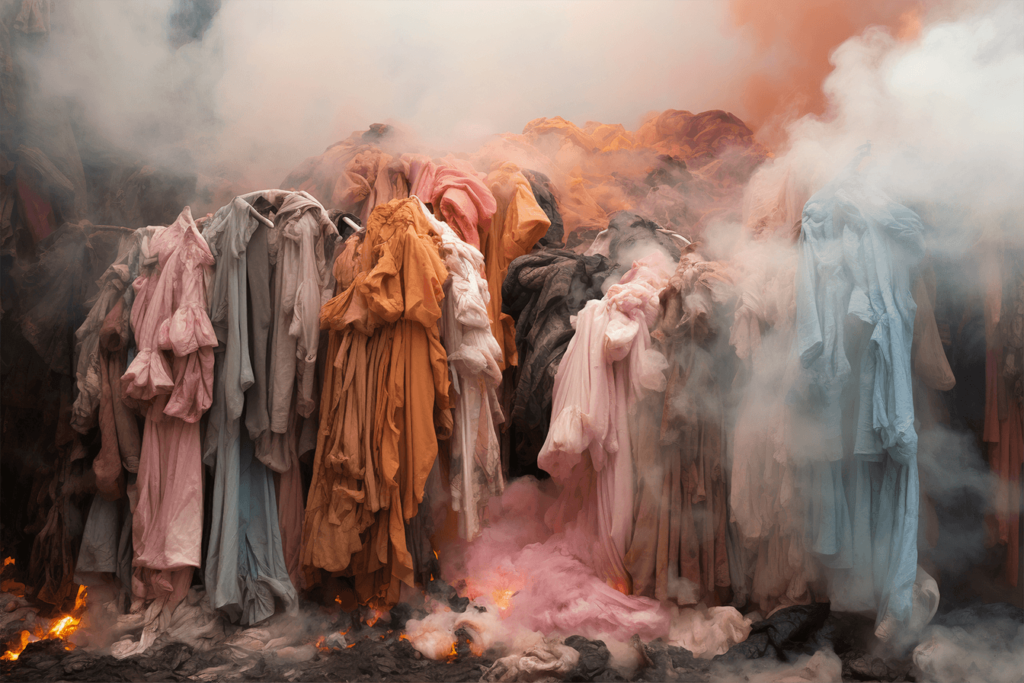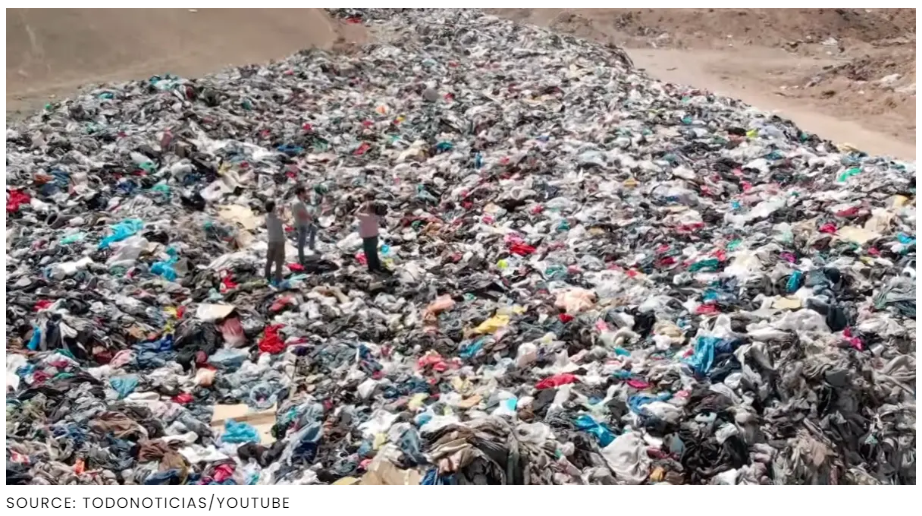Why not to buy fast fashion?

It is often to talk about the problems brought by fast fashion and the pollution it causes, but often enough that’s where the story stops. To help you rethink your fast fashion buying habits, here are three main problems caused by the fast fashion industry.
Fast fashion is a term that refers to ‘cheaply produced and affordable clothing items that copy the latest catwalk styles, and are quickly produced to hit stores and to maximize profit from current trends’. The term was first used by the New York Times in the early 90’s, when Zara arrived in New York. The NY Times described Zara as a fast fashion brand that aims to take a garment from the design stage to stores in just 15 days.
Fast fashion is the second biggest polluter
The rapid and highly unsustainable practices of the fast fashion industry contribute significantly to pollution, resource depletion and the waste management crisis. According to a report by the Ellen MacArthur Foundation, one of the largest circular economy foundations, the fashion industry is responsible for 10% of global carbon dioxide emissions, which is more than all international flights and maritime transport combined. The production of polyester, a common material in fast fashion, emits about 706 million tons of greenhouse gases annually, and the dyeing and treatment of textiles is the second largest polluter of clean water in the world, after agriculture.
In a world where we are realistically concerned about the impact of global warming, these statistics are frightening. The United Nations Environment Program (UNEP) estimates that the fashion industry consumes about 93 billion cubic meters of water annually, which is enough to meet the needs of five million people. Also, every year 500,000 tons of microfibers are released into the oceans, which is equivalent to 50 billion plastic bottles.
And while we see from this data that the pace dictated by the fast fashion industry is unsustainable, the business models of leading fast fashion brands encourage consumers to buy and discard clothes at an unprecedented rate.
Fast fashion does not care about nature or human rights
In addition to polluting the environment with its pace of production, fast fashion also violates human rights by always looking for cheaper labor. Many garments are made in developing countries where labor laws are lax and factory conditions are dangerous. Workers often work long hours for low wages in unsafe conditions.
The tragedy of the Rana Plaza factory collapse in Bangladesh in 2013. is a tragic proof of that. The Rana Plaza factory explosion killed 1,100 people and injured another 2,500. In the same year in the US, fast fashion stores sold $340 billion worth of clothing. Much of the clothing of the big fast fashion brands is produced in Bangladesh. This tragedy was not an isolated case; between 2006. and in 2012. more than 500 Bangladeshi textile workers died in factory fires. Bangladesh is not the only country where the exploitation of workers in fast fashion factories is the case, the countries where much of the production takes place are India, China, Pakistan, Indonesia, Vietnam, Cambodia and others.
Where does our clothes end up when it leaves our closet?

Apart from the fact that the exploitation of fast fashion workers mostly occurs in countries with weaker economic opportunities, these same countries end up dealing with waste created by the megalomaniacal production of the fast fashion industry.
The management of the waste produced by the fast fashion industry is a huge problem, about 92 million tons of textile waste is generated annually, most of which ends up in landfills or is incinerated, releasing toxic chemicals into the air. Only a small fraction of clothing is recycled, and the recycling process itself is energy intensive and not always feasible for mixed fiber clothing.
The amount of waste is too large for most landfills. Without a place to put them, the clothes is dumped in illegal landfills. According to National Geographic, one of those destinations is the port city of Iquique in Chile, which is one of South America’s largest free trade ports, where goods can be imported and exported without the usual taxes and fees. Because of this, millions of tons of clothing are brought to Chile every year, making the country one of the world’s largest importers of used clothing. Last year, Chilean customs reported the arrival of 46 million tons of clothing. Upon arrival, the clothing is sorted by quality. Better quality clothing is exported, and most often the quality of the clothing is so low that a large part is considered worthless and ends up in the Atacama desert.
The Atacama Desert is not the only graveyard of fast fashion in the world. From India to Ghana, unwanted clothes forms mountains of waste around settlements and on beaches. These illegal clothing dumps have dire consequences for local communities and the environment. Most clothes are made from materials like polyester and nylon that do not degrade and are condemned to sit in landfills for hundreds of years, leading to pollution and water contamination. To solve the waste problem, these piles of clothes are often set on fire, releasing clouds of toxic fumes.
What can we do as individuals?
The changes we as consumers can make are small, but they can be significant. To begin with, we can try to rethink our shopping habits, buy less clothes of poor quality and buy less often, but better quality clothes.
Buying used clothes is also one of the solutions. By buying used ‘second hand’ clothes, we give old clothes a new life and prevent it from ending up somewhere in a landfill.
We can try to educate ourselves about which brands focus on sustainability, use environmentally friendly materials and adopt ethical labor practices. We can also buy from local designers who produce small quantities of higher quality clothing.
Before you buy, ask yourself “Who made my clothes?”, which is one of the missions of Fashion Revolution, the world’s largest fashion activism movement, mobilizing citizens, brands and policy makers through research, education and advocacy.
In addition, we can try to select policy options that will implement government regulations to address the environmental and social impacts of the fashion industry, such as policies aimed at reducing carbon emissions, regulating waste management, and enforcing fair labor practices.
These are all small steps, but without small steps we will hardly ever achieve big changes. 🙂